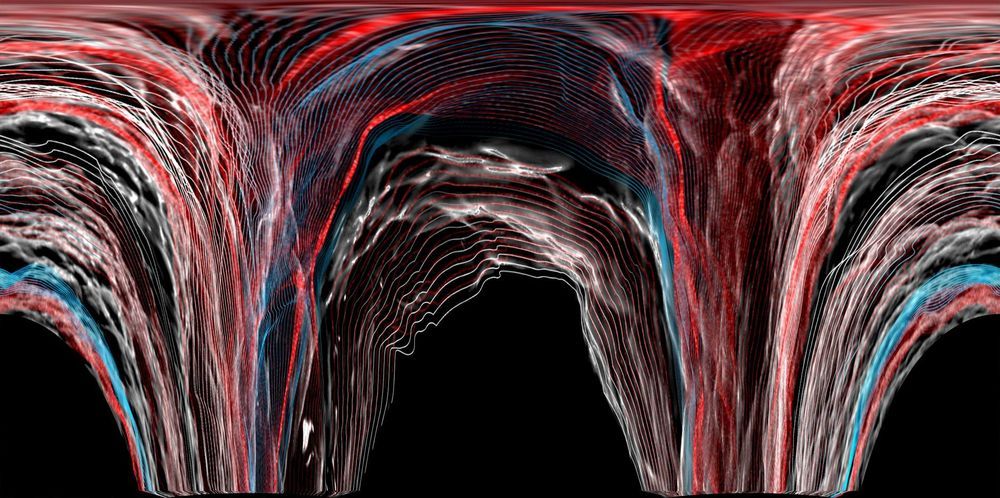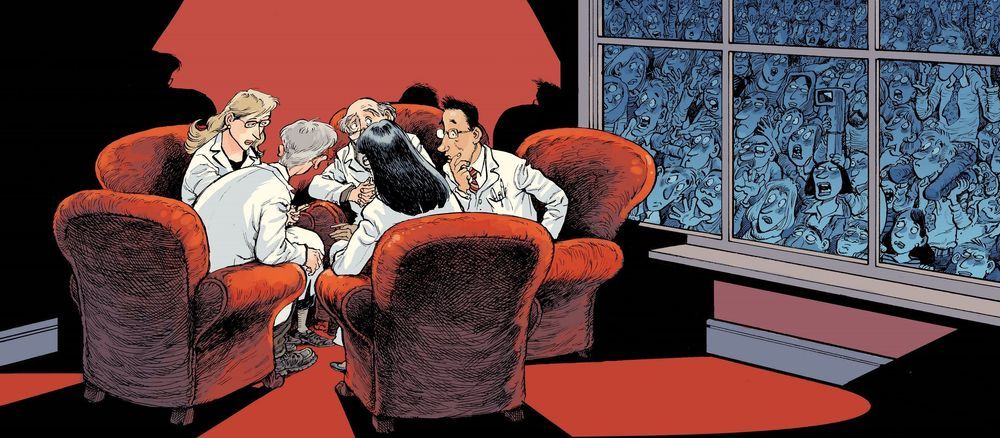Rapid progress has been made in recent years to build these tiny machines, thanks to supramolecular chemists, chemical and biomolecular engineers, and nanotechnologists, among others, working closely together. But one area that still needs improvement is controlling the movements of swarms of molecular robots, so they can perform multiple tasks simultaneously.
Get the latest international news and world events from around the world.

New Vertical Takeoff and Landing flying taxi has its roots in modern sci-fi films
Flying automobiles have long been a staple of science fiction’s optimistic visions of tomorrow, right up there with rocket jetpacks, holidays on the moon, and robot butlers. And who wouldn’t want to climb into a vehicle capable of rising up into the air above the clogged arteries of traffic experienced on most major boulevards, highways, and freeways?
Now a lofty new air taxi being built by the Israeli startup firm Urban Aeronautics hopes to cash in on those promises with its new Vertical Takeoff and Landing (VTOL) car that unites technology with Jetsons-like futuristic dreams mostly only observed in films like Blade Runner, The Fifth Element, Back to the Future, and most recently on TV in Season 3 of HBO’s Westworld.


Lost 8 Billion Light Years of Universe Evolution Revealed by Gravitational Waves
Every year, 2 million black hole mergers are missed — Australian scientists work out how to detect them, revealing a lost 8 billion light-years of Universe evolution.
Last year, the Advanced LIGO –VIRGO gravitational-wave detector network recorded data from 35 merging black holes and neutron stars. A great result — but what did they miss? According to Dr. Rory Smith from the ARC Centre of Excellence in Gravitational Wave Discovery at Monash University in Australia — it’s likely there are another 2 million gravitational wave events from merging black holes, “a pair of merging black holes every 200 seconds and a pair of merging neutron stars every 15 seconds” that scientists are not picking up.
Dr. Smith and his colleagues, also at Monash University, have developed a method to detect the presence of these weak or “background” events that to date have gone unnoticed, without having to detect each one individually. The method — which is currently being test driven by the LIGO community — “means that we may be able to look more than 8 billion light-years further than we are currently observing,” Dr. Smith said.

Tesla’s controversial vision-based full self-driving approach is finally paying off
Like many things about Elon Musk, Tesla’s approach to achieving autonomous driving is polarizing. Bucking the map-based trend set by industry veterans such as Waymo, Tesla opted to dedicate its resources in pursuing a vision-based approach to achieve full self-driving instead. This involves a lot of hard, tedious work on Tesla’s part, but today, there are indications that the company’s controversial strategy is finally paying off.
In a recent talk, Tesla AI Director Andrej Karpathy discussed the key differences between the map-based approach of Waymo and Tesla’s camera-based strategy. According to Karpathy, Waymo’s use of pre-mapped data and LiDAR make scaling difficult, since vehicles’ autonomous capabilities are practically tied to a geofenced area. Tesla’s vision-based approach, which uses cameras and artificial intelligence, is not. This means that Autopilot and FSD improvements can be rolled out to the fleet, and they would function anywhere.
This rather ambitious plan for Tesla’s full self-driving system has caught a lot of skepticism in the past, with critics pointing out that map-based FSD is the way to go. Tesla, in response, dug its heels in and doubled down on its vision-based initiative. This, in a way, resulted in Autopilot improvements and the rollout of FSD features taking a lot of time, particularly since training the neural networks, which recognize objects and driving behavior on the road, requires massive amounts of real-world data.

3 thoughts on “Arrival of Gene-Edited Babies: What lies ahead?”
By Valentina Lagomarsino figures by Sean Wilson
Nearly four months ago, Chinese researcher He Jiankui announced that he had edited the genes of twin babies with CRISPR. CRISPR, also known as CRISPR/Cas9, can be thought of as “genetic scissors” that can be programmed to edit DNA in any cell. Last year, scientists used CRISPR to cure dogs of Duchenne muscular dystrophy. This was a huge step forward for gene therapies, as the potential of CRISPR to treat otherwise incurable diseases seemed possible. However, a global community of scientists believe it is premature to use CRISPR in human babies because of inadequate scientific review and a lack of international consensus regarding the ethics of when and how this technology should be used.
Early regulation of gene-editing technology.
Tech Giant Announces ‘World’s Fastest Quantum Computer’ – Are Bitcoin (BTC) and Cryptographic Systems at Risk?
Industrial powerhouse Honeywell says its latest quantum computer is now the fastest in the world. How quickly real-world applications will develop or how swiftly they’ll be able to impact industries or affect cryptographic systems such as Bitcoin is the subject of rigorous debate.
In an announcement on Thursday, Honeywell says its team of scientists, engineers and technicians has delivered a quantum volume of 64. The metric measures both the total number of the computer’s qubits and how well it handles them. IBM’s machine scored a 32, suggesting Honeywell’s quantum computer is twice as fast.
Honeywell’s machine is designed to add up to 640,000 quantum bits (qubits) as the system scales. Tony Uttley, president of Honeywell’s quantum computing division, tells CNET.
Ai and COVID-19
My interview.
An African perspective on COVID-19 and technology.

The brain’s functional organization slows down following a relationship breakup
Summary: Findings reveal individual differences in the severity of depressive symptoms following a relationship breakdown are associated with changes in resting-state whole-brain dynamics.
Source: UPF Barcelona
During a person’s life, the experience of a stressful life event can lead to the development of depressive symptoms, even in a non-clinical population. For example, a relationship breakup is a fairly common event and is a powerful risk factor for quality of life, in addition to increasing the risk of a major depressive disorder.

The case for self-explainable AI
For instance, suppose a neural network has labeled the image of a skin mole as cancerous. Is it because it found malignant patterns in the mole or is it because of irrelevant elements such as image lighting, camera type, or the presence of some other artifact in the image, such as pen markings or rulers?
Researchers have developed various interpretability techniques that help investigate decisions made by various machine learning algorithms. But these methods are not enough to address AI’s explainability problem and create trust in deep learning models, argues Daniel Elton, a scientist who researches the applications of artificial intelligence in medical imaging.
Elton discusses why we need to shift from techniques that interpret AI decisions to AI models that can explain their decisions by themselves as humans do. His paper, “Self-explaining AI as an alternative to interpretable AI,” recently published in the arXiv preprint server, expands on this idea.